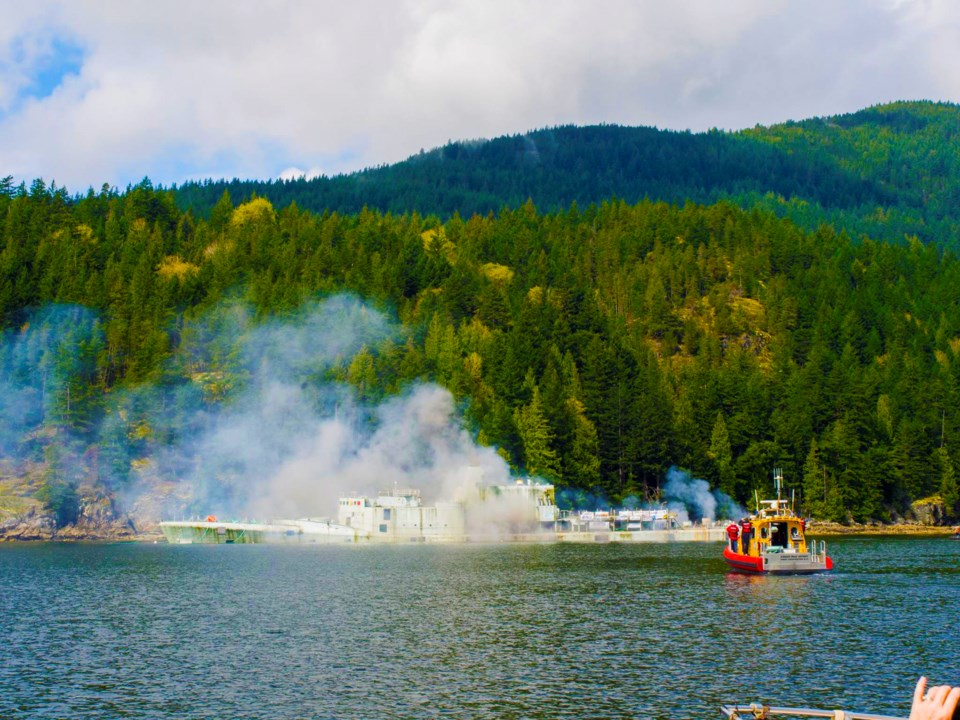For Brian Biddlecombe, owner of Bowen Island’s Cormorant Marine water taxi service, watching the HMCS Annapolis sink to the bottom of the ocean for the purpose of becoming an artificial reef was a once-in a lifetime experience.
Biddlecomb says that he waited in his water taxi with a group of people who were eager to watch the event at the edge of a boom blocking off Halkett Bay for nearly two hours while more than 100 other boats rallied for a spot along the edge of the Bay.
“As I watched it go down, I thought about what a great day it must have been for so many people, seeing this state of the art ship being launched back in 1964. But I also thought how great it is that there will be a continued use for it, as opposed to seeing the ship being destroyed into tiny pieces as scrap metal. Maybe some of the veterans who served on the Annapolis will even get a chance to dive down and see it underwater,” said Biddlecombe.
Biddlecombe says the sound of the charges exploding in the hull of the boat were louder than he expected, and they were accompanied by cheers and whistles by the people watching.
“It was interesting how they prepared the boat,” he adds. “You could see the holes cut at various heights to allow diver access, and at first the boat was sinking slowly but once the water started seeping into those wholes, it disappeared in about two minutes. It was very dramatic.”
For Howard Robins, the President of the Artificial Reef Society of British Columbia, the sinking of this ship was a long awaited success.
“I feel like I’ve got 3,000 tonnes of weight off my shoulders,” he told The Coast Reporter. “The project is finished. It’s been delivered to the province and we’re very pleased. It’s a successful project — number eight — and now she’s going to be our living laboratory of study and research.”
Rick Wall, also with the Artificial Reef Society, says there’s no need to monitor for environmental impacts, as “the ship is so clean there shouldn’t be any.”
However, the society will be monitoring diver feedback on new marine life that grows on, in and around the ship over time. The GB Church Coastal Freighter, sunk by the Artificial Reef Society in 1989 is now considered to be a mature reef, and an estimated 150 species inhabit it.
Bowen Island diver Adam Taylor was also at the sinking, and said that it was great watching the boat go down, and that there was a collective sigh of relief among the dive community as it did.
“There were 800-odd divers who volunteered over the years to clean the ship, and get it ready to be sunk,” says Taylor. “But there was never any guarantee that was going to happen. So there are a lot of people who were just very happy to see this ship go down.”
Taylor says that so far, he has been happy to spend his time underwater exploring natural reefs, but he will likely head out to the Annapolis just because it’s in the neighbourhood.
“I will probably take photos of the ship as it is now, bare, and then go back and document how that changes over time,” he says. “Who knows, my experience might even inspire me to check out some of the other artificial reefs in British Columbia.”
Taylor adds that with the level of interest this project has generated, he expects full boatloads of divers to be heading out to the Annapolis site regularly over the next few months.
With files from Jacob Roberts at The Coast Reporter.



